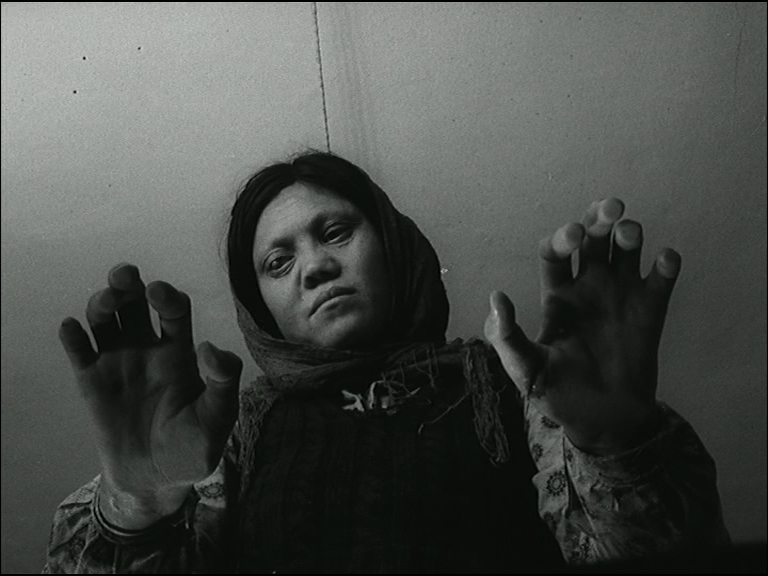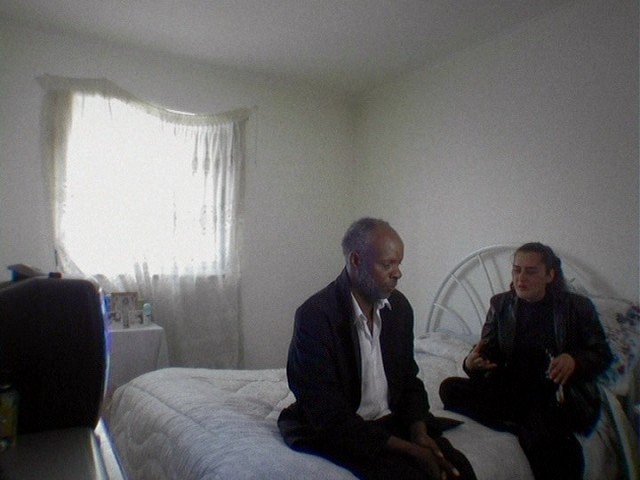
For me the most interesting “ten best” list included in the January-February 2009 issue of Film Comment is the dozen titles offered by my favorite Japanese film critic, Shigehiko Hasumi. And what’s especially interesting about his list is the inclusion of Leos Carax’s Merde — the middle episode in the three-part feature Tokyo! (2008), flanked by contributions from Michel Gondry and Joon-ho Bong. Decidedly over-the-top in both theme and style as well as execution, and starring former circus acrobat Denis Lavant, who also plays the lead role in Carax’s first three features — an actor who’s surely even more important to this filmmaker’s work than Jean-Pierre Léaud was to the early features of Truffaut — Merde is a provocation and something of an anomaly, even for someone as eclectic as Carax. (It’s also his first film of any length since his 1999 Pola X, his only major film without Lavant.)
Clearly inspired, at least in its opening stretches, by Jean-Louis Barrault in Jean Renoir’s odd Jekyll-and-Hyde adaptation, Le Testament du docteur Cordelier (1961) [see below], Lavant plays a monster who emerges from the Tokyo sewers to wreak random and violent havoc on Tokyo pedestrians until he gets brought to trial, where he gets defended by an equally strident French lawyer (Jean-François Balmer, in a performance that’s almost as extravagant as Lavant’s). Read more
This article began as a lecture delivered on April 1, 2001 at the conference “Women and Iranian Cinema,” held at the University of Virginia and organized by Richard Herskowitz and Farzaneh Milani. Two years later it appeared in French translation in Cinéma/06, then in a booklet accompanying Facets Video’s DVD release of The House is Black in 2005, and it has also appeared in my collection Goodbye Cinema, Hello Cinephilia: Film Culture in Transition (University of Chicago Press, 2010). — J.R.


The Iranian New Wave is not one but many potential movements, each one with a somewhat different time frame and honor roll. Although I started hearing this term in the early 1990s, around the same time I first became acquainted with the films of Abbas Kiarostami, it only started kicking in for me as a genuine movement — that is, a discernible tendency in terms of social and political concern, poetics, and overall quality — towards the end of that decade.
Some commentators — including Mehrnaz Saeed-Vafa — have plausibly cited Sohrab Shahid Saless’s A Simple Event (1973) (1) as a seminal work, and another key founding gesture, pointing to a quite different definition and history, would be Kiarostami’s Close-up (1990) (2). Read more
Written circa June 2010 and previously unpublished. — J.R.


I can still recall the amusement of Penelope Houston — my boss, during the mid-1970s, when I was working for British Film Institute’s Editorial Department, on the staffs of Sight and Sound and Monthly Film Bulletin — whenever she came across routine references to directors Samuel Fuller and Douglas Sirk as “neglected” figures. Even though very few Anglo-American cinephiles could have even identified Fuller and Sirk during the 1950s, when most of their major films were coming out, Penelope certainly had a point when it came to questioning how “neglected” they still were among contemporary cinephiles in the U.K., especially after the Edinburgh film festival had extensive retrospectives devoted to each of them in 1969 and 1972, respectively. By the mid-70s, at least three books about Fuller and two about Sirk were available in the U.K — none of which appeared to have the slightest effect on their status as “neglected” filmmakers, according to the usual sound-bites.
Penelope indeed had a point. But then again, so did the various teachers and journalists who described Fuller and Sirk as “neglected,” because even though one book about each figure was published in the British Film Institute’s Cinema One series (a joint effort of the BFI’s Editorial and Education Departments in which Peter Wollen had a voice as well as Penelope), these directors remained relatively shadowy figures in Sight and Sound, a quarterly in that period which had a guaranteed subscription list based on BFI membership and therefore an unparalleled degree of clout over other film magazines in the U.K. Read more





